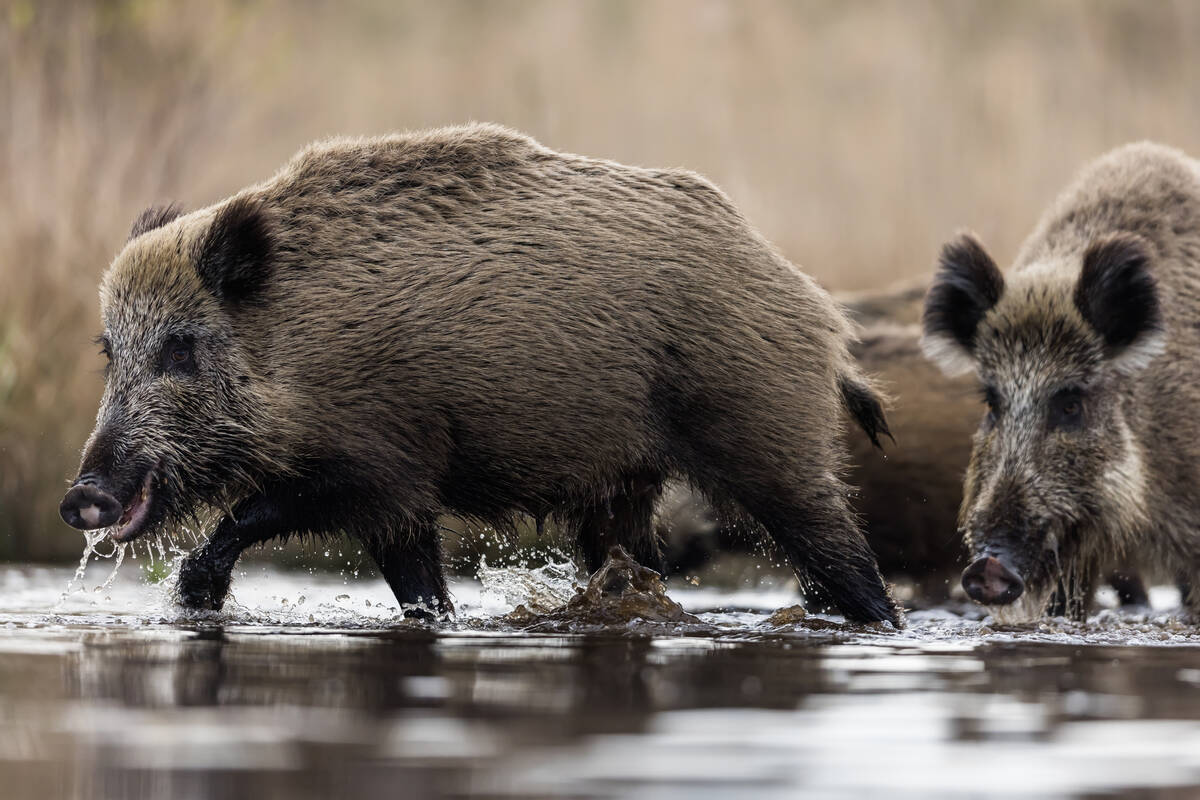The super hero that can fight cattle bloat is dressed in pink.
When seeded with alfalfa, pink-blossomed sainfoin can prevent cattle losses while also providing nutritious forage.
Trouble is, the old varieties of sainfoin don’t stand up to second and third cuts and are gradually overcome by alfalfa.
No sainfoin, no bloat protection.
A new variety of the legume, AAC Mountainview, appears to have overcome that trouble.
Developed by Agriculture Canada research scientist and forage breeder Surya Acharya, AAC Mountainview regrows after cutting and survives well with alfalfa.
Read Also

Manitoba bans wild boar possession
Manitoba has tightened the regulatory status of Eurasian wild boar in an effort to help fight back against invasive wild pigs.
As well, it will prevent bloat in grazing cattle if it makes up 20 to 25 percent of the hay stand.
“That’s what our research indicates,” said Acharya.
“When it goes below that, then the animals have a tendency to bloat. They don’t have access to both the plants at the same time.”
Acharya said Mountainview and another similar variety yet to be released were developed by selecting for regrowth, high yield and survival in alfalfa stands.
Alfalfa, the so-called “queen of forages,” is grown on 6.4 million acres in Western Canada. It is quick to establish, provides high forage yield and quality and is highly palatable to cattle.
Efforts to develop bloat-free alfalfa have been elusive, said Acharya, so he turned his attention to sainfoin and improve upon Nova, the most common variety. He calls it his pet project.
“It’s beautiful, but it is not just good to look at,” he said in a recent webinar organized by the Beef Cattle Research Council.
He said NorthStar Seed Ltd., which distributes AAC Mountainview, has limited amounts of seed left for this year.
However, those who obtained some for seeding this year might be able to lightly graze it toward the end of the season if it is planted early and properly.
Acharya recommends that sainfoin be seeded in alternate rows with alfalfa at half-inch to three-quarter inch deep.
“Broadcasting does not work. Make sure everybody understands that,” he said.
“You have to plan to drill it. Seed it in between rows (of alfalfa) if you can do it. That is the best. If it’s a very old stand of alfalfa, use a drill that can cut through the root zone and put the seed in contact with the soil.”
He warned against mixing alfalfa and sainfoin seed for planting.
Alfalfa seed is smaller, so it tends to drop first. Then its hardy nature gives it a head start. The result is an alfalfa field with patchy sainfoin.
“That is the reason why most people who are trying to seed it in the same row are having trouble establishing good sainfoin in their alfalfa stand.”
















